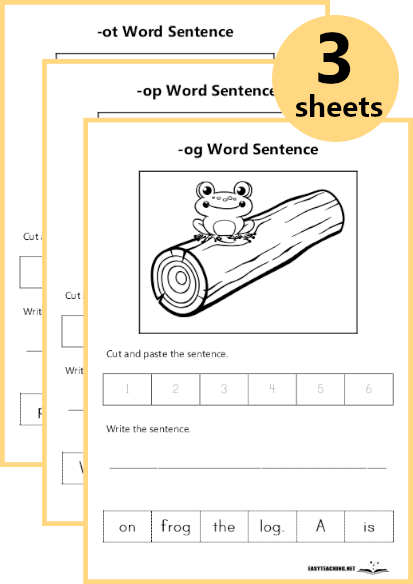

Volume & Capacity Terms Posters
A set of 5 posters explaining the terms ‘full’, ‘nearly full’, ‘half full’, ‘nearly empty’ and ‘nearly empty’.

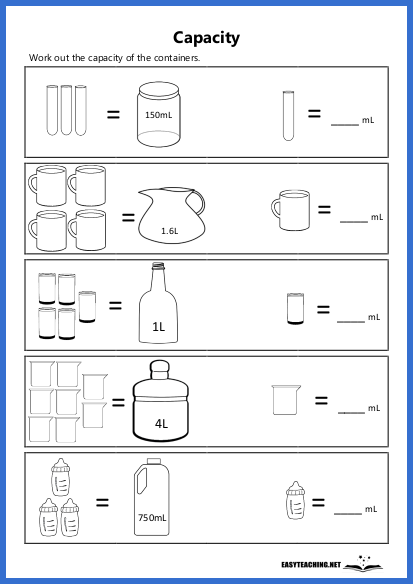
Partitioning Capacity (2)
Partition the capacity of the large containers to calculate the capacity of the smaller containers.


Partitioning Capacity (1)
Partition the capacity of the large containers to calculate the capacity of the smaller containers.


More or Less Than 1L?
Show whether the containers hold less or more than 1 litre.


Volume Match
Read the volume of water in each measuring jug to work out which container it came from.


Ordering by Capacity
Cut and paste to sort the containers in order of smallest capacity to largest capacity.


Empty, Half Full or Full?
Cut and paste to show whether each container is empty, half full or full.


Empty or Full?
Cut and paste to show whether each container is empty or full.


Comparing Capacity
Circle the object in each pair that has the greatest capacity.


Describing Volume Match
Cut and paste to match the volume terms to the correct containers.


Describing Volume
Use volume terms to describe the volume of each container.

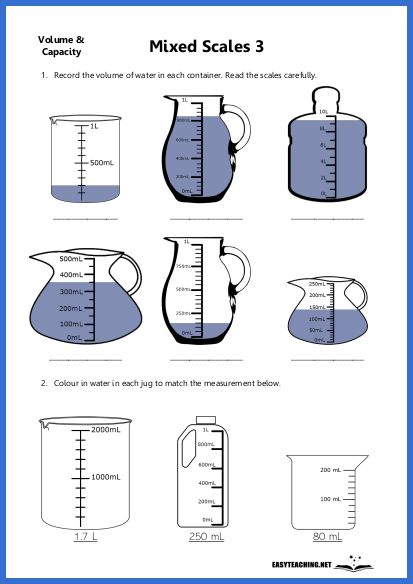
Capacity: Mixed Scales (3)
Read the scale and record the capacity of each container.


Capacity: Mixed Scales (2)
Read the scale and record the capacity of each container.
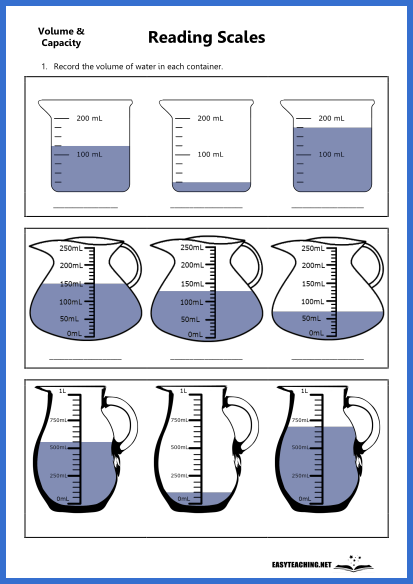
Capacity: Mixed Scales (1)
Read the scale and record the capacity of each container.

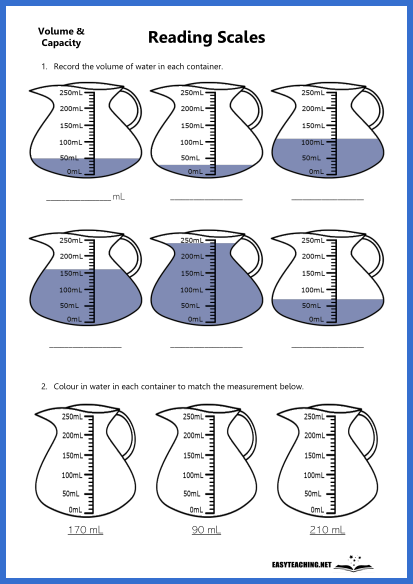
Capacity: Labelled 50mL Increments
Read the scale and record the capacity of each container.

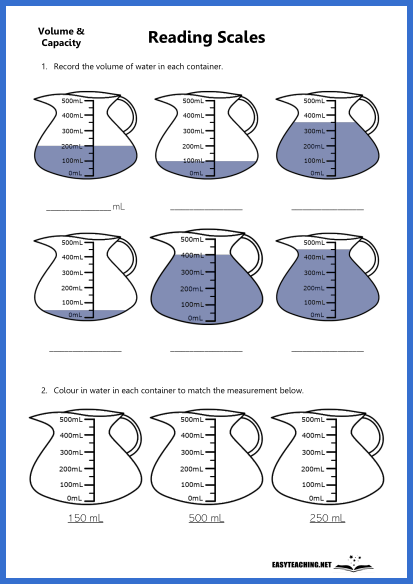
Capacity: Labelled 100mL Increments (3)
Read the scale and record the capacity of each container.
